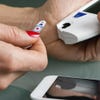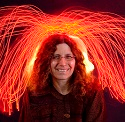Healthcare IT: Hot Trends For 2016, Part 1
In the first of this two-part series on healthcare IT, we look at the ways in which advances in patient-focused data collection, wearables, and the Internet of Things will change how doctors and patients communicate. In the second part, we look at the influx of healthcare data, and what it will mean for practitioners and IT professionals.


Tech Fail Forecast: Bursting The Next Bubble
Tech Fail Forecast: Bursting The Next Bubble (Click image for larger view and slideshow.)
The year ahead will be pivotal for healthcare technology from the perspective of patients, practitioners, medical researchers, and the IT professionals who serve them. Patients can expect strides in wearables and the Internet of Things that will lead to improved management of chronic diseases.
Practitioners and medical researchers can look forward to technologies that enable them to apply data analysis to develop new insights into finding cures for difficult diseases. Healthcare CIOs and other IT leaders can expect to be called upon to manage all the new data and devices that will be transforming healthcare as we know it.
[ In the second of this two-part series on healthcare IT, we look at the influx of healthcare data and what it will mean for practitioners and IT professionals. Read Healthcare IT: Hot Trends For 2016, Part 2. ]
According to Sam Volchenboum, director of the Center for Research Informatics at the University of Chicago, "2016 will be the year of liberated health data." In his upbeat estimation, the coming year will bring patients more-informed treatments, faster rates of innovation, and new ways of "mashing up" healthcare data, leading to greater insights into hard-to-crack diseases like cancer.
Volchenboum is not alone in his upbeat view of the short-term future for healthcare IT. Experts and IT practitioners foresee good things ahead, despite concerns about privacy, security, and the distractions generated by the regulations meant to address those challenges.
[What's new in wearables? Read 8 Hot Wearable Devices To Get You Healthy In 2016.]
Several technology trends are converging to give patients advantages, such as improved sources of knowledge and fast, improved medical service.
"In 2016, the debate will heighten as to whether patients -- or health consumers -- will be asked to do more or less to manage their health," said Dr. Stephen S. Tang, president of the University Science Center in Philadelphia. "The more information the health consumer has, the more analytics and control he or she may want." We'll each have more opportunity to monitor our health and wellbeing through apps and products that take diagnostics and treatments out of the physician's office and into the home, Tang said.
Tang sees this as a positive: Providers and research institutions will take on the burden of inventing better solutions, rather than giving already-busy people a new set of responsibilities, he says. Those providers will consider each individual as an opportunity, not a problematic and expensive bundle of symptoms.
Analyst firm Forrester Research describes this as "the empowered patient," and in its 2016 predictions suggests several downstream effects. CIOs will face increased demands for interoperability, security, and infrastructure updates, said Forrester analyst Kate McCarthy.
For example, consider the growing number of consumer health devices, each of which generates data that we-as-patients expect to be incorporated in our healthcare process. Mainstream providers will struggle to meet those demands for patient-generated healthcare data (PGHD), said Patrick Everett, founder of Digital Doctor and an independent consultant in healthcare informatics. "There are many challenges to address before a patient will be able to automatically send their blood-glucose, blood pressure, and heart rate to their physician seamlessly." Among the issues to be resolved: financial disincentives, workflow disruption for providers, physician worries about liability and workload, incompatible technologies for patients and providers, a lack of technical standards, and an underdeveloped case for change. "This is a trend on the horizon worth monitoring, though solutions are a decade away," said Everett.
Many of those enabling technologies are coming from the Internet of Things, not only mobile technologies in general. Plus there are many innovations in purely technical areas, such as 3D printing as applied to prosthetics.
Among those looking to IoT is Dr. Patricia Abbott, director of the Hillman Scholars in Innovation Program at the University of Michigan School of Nursing. Abbot said she expects healthcare to be affected in the short term by sensor-based and patient-residing technologies that help patients and providers communicate and manage chronic diseases.

(Image: microgen/iStockphoto)
"The 'killer app' for wearables is healthcare," said Everett. He cites features in development such as blood-glucose monitoring, blood pressure monitoring, and hydration detection. These "wearables" can lead to mobile apps that can help with fall detection or vasovagal response detection (including automatic alerts to first-responder services, family, etc.).
Those are exciting advances for patients, but they also benefit providers, says Kevin MacDonald, CEO of Kit Check. "In healthcare, both the risk of error and cost of inventory are high, while processes are fluid and require continuous collaboration." MacDonald expects IoT use to automate processes, provide visibility into the patient care cycle, and catch errors before they occur. "Over 8 million hospital medications will be tracked with IoT in 2016 -- a tenfold increase from 2013," he predicted.
In the short term, though, expect more adoption of telemedicine. "The technology is already here," said Georges Nahon, CEO of Orange Silicon Valley. "It's just a matter of changing doctor/patient behaviors and raising awareness, in addition to sorting out intra-state and international regulations."
Nahon said he expects the telemedicine market to continue to grow over the next four years. "Either via PC or tablet/mobile, care providers will rely more heavily on these services, in conjunction with Internet of Things (IoT) devices, to increase capacity at their care facilities and reduce cost of care."
In Nahon's eyes, telemedicine will make a difference, especially for patients who have chronic conditions such as diabetes and hypertension where continuous home monitoring and regular physician check-ins are critical. He also sees traction in developing markets, where access to quality healthcare is more of an issue and the payoff can be much greater.
Ideally, at least, the technology advances can help the medical industries make the consumer the primary focus. "The concept of personalized medicine will broaden to include managing all phases of the customer relationship," said Brad Bostic, CEO of hc1.com.
**Elite 100 2016: DEADLINE EXTENDED TO JAN. 15, 2016** There's still time to be a part of the prestigious InformationWeek Elite 100! Submit your company's application by Jan. 15, 2016. You'll find instructions and a submission form here: InformationWeek's Elite 100 2016.
About the Author
You May Also Like






